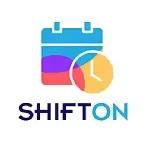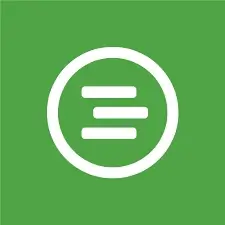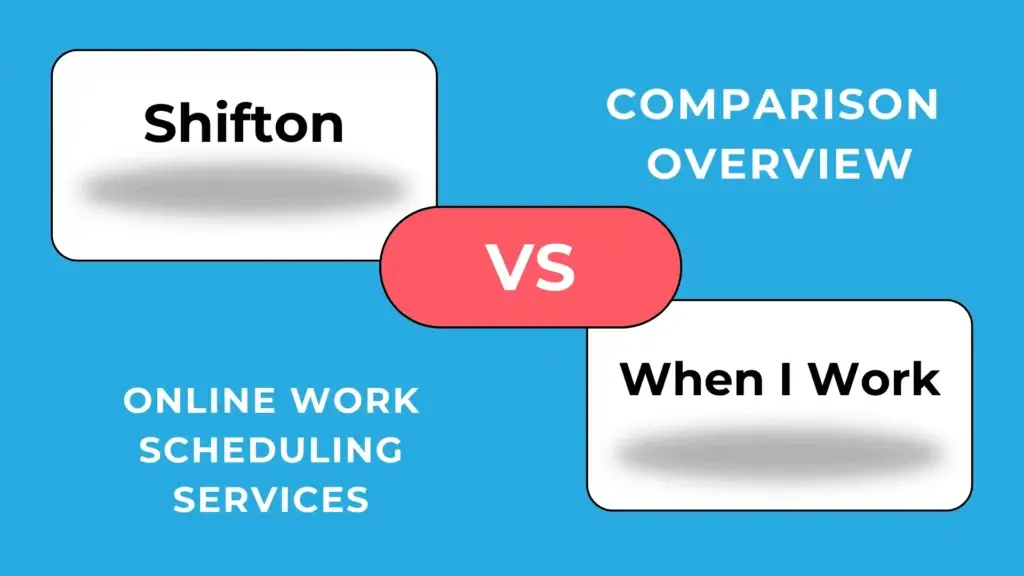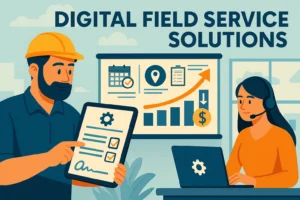More articles comparing different services are available in our section.
What is Shifton
 Shifton will make your workload and your employees' lighter with our advanced work schedule maker. No matter how tricky your request is, Shifton's schedule maker tool will help you with it, saving you time.Shifton's work schedule creator has all the needed features for managing shifts. With our automatic schedule maker, you can set up a fitting schedule using templates, with an easy-to-use interface. The shift maker will help you create it in just a few minutes, which is why it is also called the work shift schedule generator – for its ability to create a structured framework into which you only need to plug your data. You can rely on our automatic employee schedule generator.The schedule shift maker is perfect for those who need a trusty tool for automating schedule creation. Our online shift schedule maker can be accessed from all popular devices.Shifton offers tools like the shift creator and shift builder, making it the perfect job schedule maker for both a small café and a large corporation. With Shifton, you get a work shift maker that will be your reliable assistant in what every manager dreams of — increased productivity, employee satisfaction, and saving their own time.
Shifton will make your workload and your employees' lighter with our advanced work schedule maker. No matter how tricky your request is, Shifton's schedule maker tool will help you with it, saving you time.Shifton's work schedule creator has all the needed features for managing shifts. With our automatic schedule maker, you can set up a fitting schedule using templates, with an easy-to-use interface. The shift maker will help you create it in just a few minutes, which is why it is also called the work shift schedule generator – for its ability to create a structured framework into which you only need to plug your data. You can rely on our automatic employee schedule generator.The schedule shift maker is perfect for those who need a trusty tool for automating schedule creation. Our online shift schedule maker can be accessed from all popular devices.Shifton offers tools like the shift creator and shift builder, making it the perfect job schedule maker for both a small café and a large corporation. With Shifton, you get a work shift maker that will be your reliable assistant in what every manager dreams of — increased productivity, employee satisfaction, and saving their own time.What is When I Work

- Shift Scheduling: Users can easily create and modify schedules, allowing employees to view their shifts from any device.
- time tracking: The platform includes tools for tracking hours worked so businesses can monitor attendance and manage payroll more effectively.
- Mobile Accessibility: Employees can access their schedules, request time off, and communicate with managers through a mobile app, making it convenient for on-the-go staff.
- Team Communication: When I Work fosters real-time communication among team members, encouraging collaboration and ensuring everyone is informed about changes to schedules or shifts.
- Reporting and Analytics: The software offers insights into labour costs, overtime, and staff performance, helping managers make data-driven decisions.
- Integration Capabilities: When I Work can integrate with various payroll and HR systems, simplifying workforce management for businesses.
Shifton vs. When I Work: Key Features
| Funktion | Shifton | When I Work |
| Scheduling | Easy drag-and-drop scheduling | User-friendly scheduling interface |
| Time Tracking | Automated time tracking with clock-in/out feature | Time clock functionality; mobile check-in |
| Mobile App | Mobile availability for both managers and employees | Dedicated mobile app for iOS and Android |
| Employee Communication | Internal messaging and notifications | Real-time chat and notifications |
| Shift Swapping | Shift swap requests and automatic notifications | Shift swapping between employees is easily managed |
| Reporting | Advanced reporting and analytics on labour costs | Basic reporting features |
| Integrations | Flexible integrations with third-party apps via APIs | Integrates with various payroll and HR systems |
| User Interface | Intuitive and straightforward design | Modern and user-friendly interface |
| Task Management | Task assignment and tracking | Limited task management features |
| Customer Support | 24/7 support via chat, phone, and email | Available support via chat, phone, and email |
| Pricing | Tiered pricing model; free trial available | Flexible pricing plans for different business sizes |
| Availability | 24/7 system availability | 24/7 system availability |
| Onboarding | Streamlined onboarding process | Easy onboarding with tutorials available |
Shifton vs. When I Work: Similarities
Shifton and When I Work share several similarities, making them both effective tools for workforce management. Both platforms offer user-friendly interfaces that simplify the scheduling process for managers and employees alike. They include mobile applications, allowing staff to access their schedules, clock in and out, and communicate with their teams on the go. Each software provides features for time tracking and attendance management, enabling businesses to monitor employee hours and streamline payroll processes. Additionally, both platforms facilitate shift swapping, providing employees the flexibility to trade shifts and keep their schedules updated. They also emphasise customer support, ensuring users can get help when needed. Overall, Shifton and When I Work aim to improve operational efficiency and enhance communication within teams.Shifton vs. When I Work: Differences
Shifton shows several advantages over When I Work, particularly for businesses looking for specific workforce management features. First, Shifton often offers a more comprehensive employee management system, which includes tools for performance tracking, onboarding, employee engagement, and even forecasting. This can be especially beneficial for organisations aiming to foster a positive workplace culture and retain talent.Additionally, Shifton's customisable scheduling features allow managers to create more tailored shifts based on unique business needs, making it easier to accommodate various employee preferences and operational demands. This flexibility can lead to higher employee satisfaction and better adherence to scheduling.In terms of user experience, Shifton may provide a more intuitive interface that simplifies navigation, enabling users to quickly access the features they need without being overwhelmed by unnecessary complexity. This can enhance productivity and reduce the learning curve for new users.Moreover, Shifton tends to highlight strong customer support, offering personalised assistance to help businesses implement and make the most of the platform efficiently. This level of support can be crucial for companies that might require more hands-on guidance during their switch to new software.Overall, businesses looking for a robust set of features, flexibility in scheduling, and personalised support might find Shifton to be a better fit than When I Work.Shifton vs. When I Work: Pros and Cons
Shifton offers a suite of features that include employee onboarding, performance tracking, and engagement tools, making it a good choice for organisations focusing on holistic management.- Customisable Scheduling: It allows for flexible scheduling options, catering to unique business needs and employee preferences.
- User-Friendly Interface: Many users find Shifton's interface intuitive and easy to navigate, which can boost productivity and reduce training time.
- Strong Customer Support: Shifton often highlights personalised customer support, assisting businesses in troubleshooting and optimising their use of the platform effectively.
- Integrations: It may have fewer integration options with other HR and payroll systems compared to some competitors, which could limit data interoperability for larger organisations.
- Pricing Structure: While versatile, the pricing might not cater well to every business size, potentially affecting small businesses trying to manage costs.
- Mobile Accessibility: The platform has a robust mobile app that facilitates employee communication and schedule management on the move, enhancing workforce flexibility.
- Widespread Integrations: It offers extensive integrations with popular payroll and HR systems, which can streamline operations for businesses already using these tools.
- 24/7 Customer Support: When I Work typically provides round-the-clock support, ensuring users can get help whenever they need it.
- Limited Employee Management Features: While strong in scheduling, When I Work may lack some comprehensive employee management tools that Shifton offers, which could be a downside for companies focused on performance and engagement.
- Cost of Premium Features: Certain functions and capabilities are only available at higher subscription levels, which could lead to extra costs for businesses seeking more robust functionalities.
Shifton vs. When I Work: Pricing
Shifton and When I Work have different pricing structures that cater to various business needs.Shifton typically offers a subscription-based model, with pricing often dependent on the number of employees and the features selected. They may offer tiered pricing plans that allow organisations to choose a package that fits their budget and requirements, but specific pricing details can vary, and prospective customers generally need to contact Shifton for a tailored quote.When I Work also has a pricing model. They often provide a base plan for scheduling and time tracking, with extra costs for more advanced features such as advanced reporting, payroll integrations, and hiring tools. Like Shifton, When I Work encourages interested businesses to request a quote for detailed pricing based on their specific needs.Both platforms may offer discounts for annual subscriptions versus monthly payments, and the final cost will depend on the features selected, the number of users, and any customisations required. It's advisable for businesses to review their specific needs and contact the platforms for accurate pricing information.5 Recommendations For Choosing Between Shifton vs. When I Work
When deciding between Shifton and When I Work, consider the following recommendations to help guide your choice:- Identify Your Primary Needs: Assess whether your main focus is on employee scheduling, time tracking, or comprehensive workforce management. If you prioritise scheduling and real-time communication, When I Work may be more suitable. Conversely, if you need a broader range of employee management features, Shifton might be the better option.
- Evaluate User Interface and Usability: Take advantage of free trials or demos offered by both platforms to evaluate the user interface and ease of use. A system that is intuitive and user-friendly can greatly enhance employee engagement and reduce training time.
- Consider Integration Requirements: Review the existing tools and systems your organisation uses. If you heavily rely on specific HR or payroll software, check which platform integrates better with your current systems. When I Work is known for its extensive integrations, while Shifton may have fewer options.
- Analyse Pricing Models: Compare the pricing structures of both platforms, considering your organisation's size and budget. Look for potential hidden costs, such as charges for extra features or a higher number of employees. Ensure that the chosen platform offers a pricing plan that fits your financial constraints.
- Solicit Feedback from Teams: Engage with the relevant teams or departments that will be using the software. Gather their input on the features they find most important and their preferences regarding user experience. This collaborative approach can help ensure that the chosen platform meets the needs of those who will use it daily.
Ten Questions You Must Ask When Choosing Between Shifton vs. When I Work
When choosing between Shifton and When I Work, asking the right questions can help you make an informed decision. Here are ten essential questions to consider:- What are the core features of each platform? Understanding the primary features each solution offers can help you decide which one aligns better with your needs.
- How does the pricing structure work? Enquire about the pricing tiers, what each plan includes, and if there are any extra costs for features or services.
- Can you integrate with our existing HR and payroll systems? Check if the platforms support integration with the tools you currently use to prevent disruptions in your workflow.
- What is the user interface like, and how easy is it for employees to navigate? A user-friendly interface is crucial for ensuring employee engagement and minimising training time.
- What level of customer support is available? Enquire about the types of support (e.g., phone, email, chat) and availability (24/7 vs. business hours) provided by each platform.
- Are there mobile apps available, and how functional are they? Determine if both platforms offer mobile applications and assess how well these apps perform for on-the-go scheduling and communication.
- What reporting and analytics capabilities does each platform offer? Understanding the level of reporting available can help you analyse workforce data and make well-informed decisions.
- How customisable is each platform? Find out if you can tailor features to meet your specific organisational needs and if customisation requires additional costs.
- What is the onboarding process like? Ask about the training and support provided during the initial setup to ensure a smooth transition to the new system.
- Can you provide case studies or testimonials from similar businesses? Request references or success stories from other companies in your industry to understand the effectiveness of each platform.
Shifton vs. When I Work: Use Cases
Shifton is ideal for:- Large Retail Chains: Shifton's advanced scheduling capabilities allow managers to create and manage complex shift patterns across various locations. With self-service tools, employees can pick up extra shifts and manage their schedules independently, reducing the administrative burden on managers.
- Hospitality Businesses: Hotels often face fluctuating staffing needs. Shifton can help manage diverse roles (front desk, housekeeping, dining) while ensuring compliance with labour regulations. The platform's reporting features provide insights into staffing efficiency and labour costs.
- Healthcare Facilities: Healthcare facilities need precise scheduling due to varying patient loads and specialised staff requirements. Shifton assists with managing both part-time and full-time staff, allowing for easy adjustments to schedules based on patient demand.
- Manufacturing Companies: Shifton effectively handles shift rotations and overtime management, ensuring compliance with labour laws and safety regulations. The integration of HR functions streamlines employee onboarding and performance tracking.
- Call Centres: With a constant need for personnel at different times, Shifton's customisable scheduling helps ensure that adequate staff levels are maintained at all times. Automated alerts for shift changes enhance communication among team members.
- Small to Medium-Sized Businesses: When I Work's user-friendly interface is perfect for small teams, allowing them to create schedules quickly and communicate shift changes instantly. Staff can view their schedules on mobile devices, making it easier to manage their time.
- Event Management Companies: Quick adjustments to staffing levels are vital in event management. When I Work allows event organisers to easily schedule and communicate with temporary staff, ensuring that shifts are filled as needed.
- Fitness Studios: The ability to manage class schedules and instructor availability is crucial. When I Work enables fitness studios to publish class schedules online, allowing clients to book classes while keeping instructors informed of their schedules.
- Delivery and Service Businesses: When I Work's time-tracking and scheduling features help manage an on-the-go workforce. Employees can check in and out via their mobile devices, streamlining time management and payroll processes.
- Nonprofits and Volunteer Organisations: When I Work can help nonprofits manage volunteer schedules effectively, ensuring that all events are staffed adequately. Volunteers can easily sign up for shifts and communicate with coordinators in real-time.
Final Thoughts on Shifton vs. When I Work: Which Is Best For Business
Choosing the right workforce management platform can significantly impact your business's operational efficiency, employee satisfaction, and overall success. Both Shifton and When I Work offer valuable features tailored to different types of organisations. Below are some key considerations to help you determine which solution may be the best fit for your business needs.When to Choose Shifton:- Complex Scheduling Needs: If your business operates in an environment where complex shift patterns and diverse roles are the norm — such as in healthcare, hospitality, or large retail chains — Shifton is likely the better choice. Its robust scheduling features allow for intricate customisations and efficient management of a varying workforce.
- Compliance and Reporting Requirements: For organisations that must navigate strict labour regulations and reporting requirements, Shifton provides comprehensive tools to ensure compliance. The detailed reporting capabilities help management track hours, overtime, and labour costs effectively.
- Integration with HR Functions: If your business seeks an all-in-one solution that goes beyond scheduling — covering onboarding, performance management, and employee records — Shifton's integrated HR features can streamline these processes, making it easier to maintain comprehensive workforce management.
- Simplicity and Ease of Use: If your organisation is smaller or if you need a more straightforward approach to scheduling, When I Work offers an intuitive interface that is easy for employees to use. Its mobile app allows for quick access to schedules and allows employees to manage shift requests on the go.
- Flexibility for Service-Oriented Businesses: For businesses like coffee shops, fitness studios, or delivery services where staffing needs can change rapidly and where team communication is crucial, When I Work excels. Its real-time communication features facilitate immediate adjustments to schedules, ensuring that operations run smoothly during peak times.
- Cost-Effectiveness for Smaller Teams: When I Work is often more cost-effective for small to medium-sized businesses. If your organisation has limited budgeting for software, you may find that When I Work provides the functionalities you need without the complexity and cost associated with larger platforms like Shifton.
- Choose Shifton if you require advanced scheduling capabilities, robust compliance tools, and comprehensive HR integrations for a larger workforce.
- Opt for When I Work if you value ease of use, need a flexible solution for a smaller team, and prioritise real-time communication.
More detailed on the topic:
Shifton vs 7Shifts: Comparison Overview
Shifton vs. Deputy: Comparison Overview
Shifton vs. Connecteam: Comparison Overview

 English (US)
English (US)  English (GB)
English (GB)  English (CA)
English (CA)  English (AU)
English (AU)  English (NZ)
English (NZ)  English (ZA)
English (ZA)  Español (ES)
Español (ES)  Español (MX)
Español (MX)  Español (AR)
Español (AR)  Português (BR)
Português (BR)  Português (PT)
Português (PT)  Deutsch (DE)
Deutsch (DE)  Deutsch (AT)
Deutsch (AT)  Français (FR)
Français (FR)  Français (BE)
Français (BE)  Français (CA)
Français (CA)  Italiano
Italiano  日本語
日本語  中文
中文  हिन्दी
हिन्दी  עברית
עברית  العربية
العربية  한국어
한국어  Nederlands
Nederlands  Polski
Polski  Türkçe
Türkçe  Українська
Українська  Русский
Русский  Magyar
Magyar  Română
Română  Čeština
Čeština  Български
Български  Ελληνικά
Ελληνικά  Svenska
Svenska  Dansk
Dansk  Norsk
Norsk  Suomi
Suomi  Bahasa
Bahasa  Tiếng Việt
Tiếng Việt  Tagalog
Tagalog  ไทย
ไทย  Latviešu
Latviešu  Lietuvių
Lietuvių  Eesti
Eesti  Slovenčina
Slovenčina  Slovenščina
Slovenščina  Hrvatski
Hrvatski  Македонски
Македонски  Қазақ
Қазақ  Azərbaycan
Azərbaycan  বাংলা
বাংলা 

